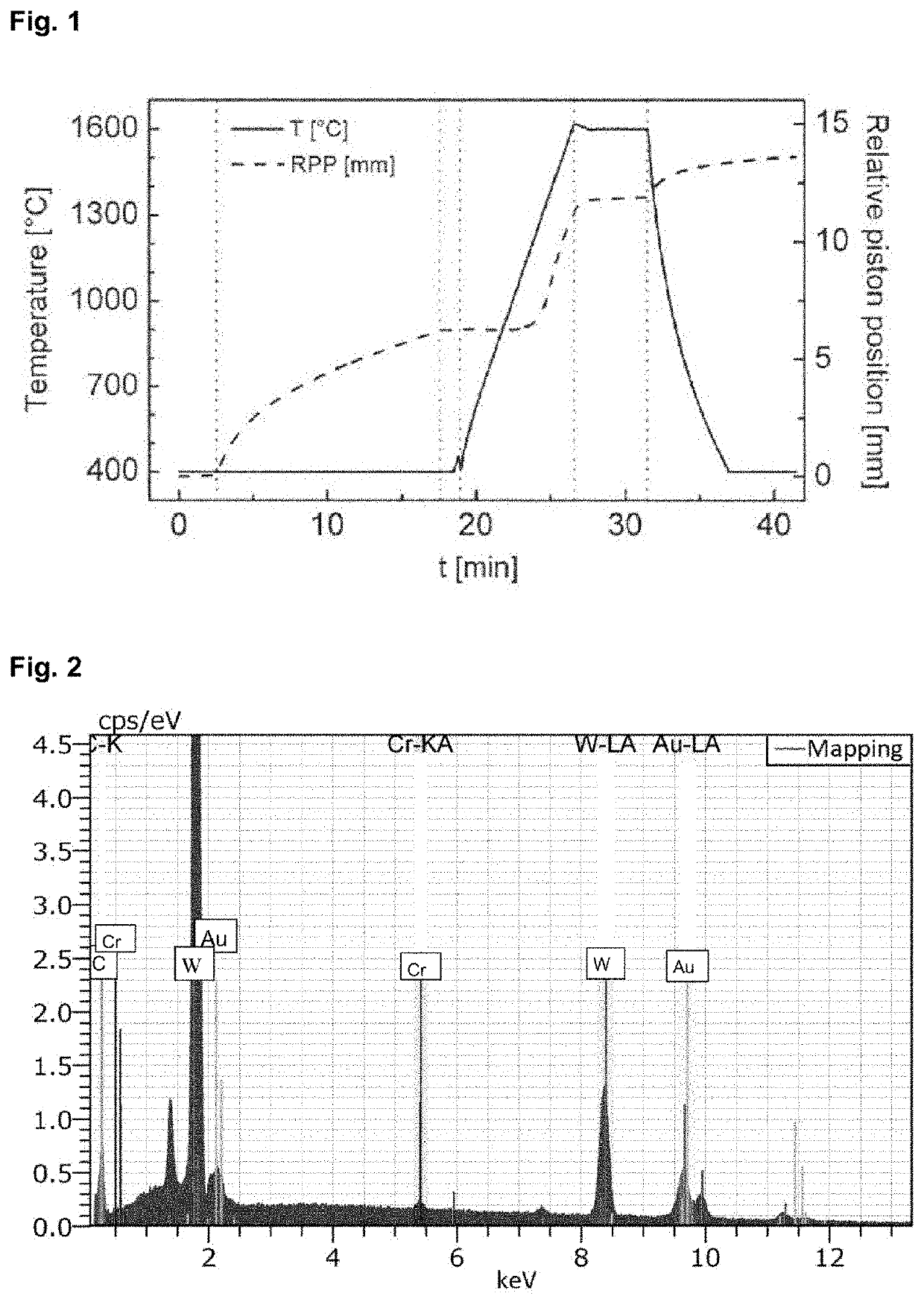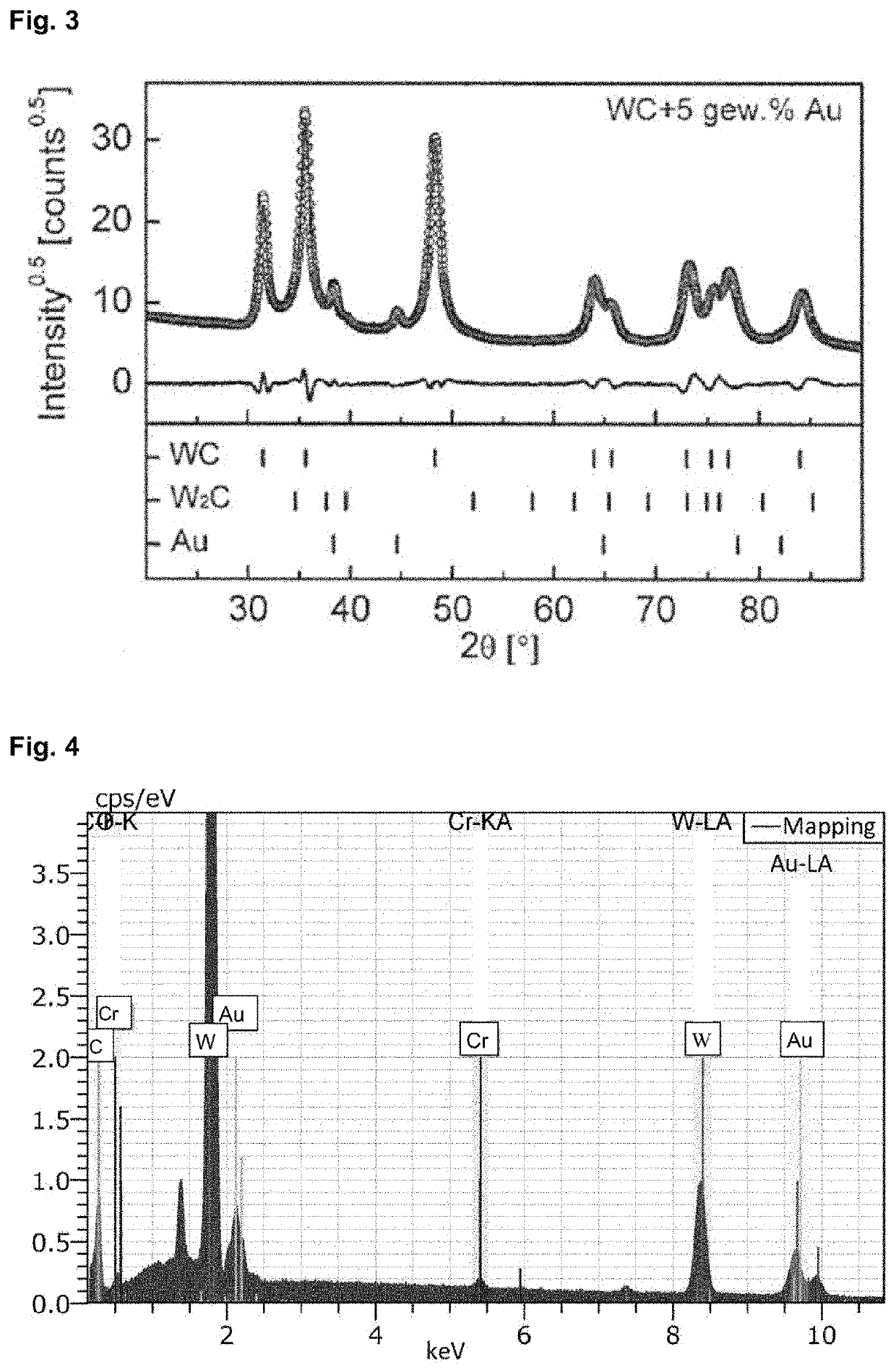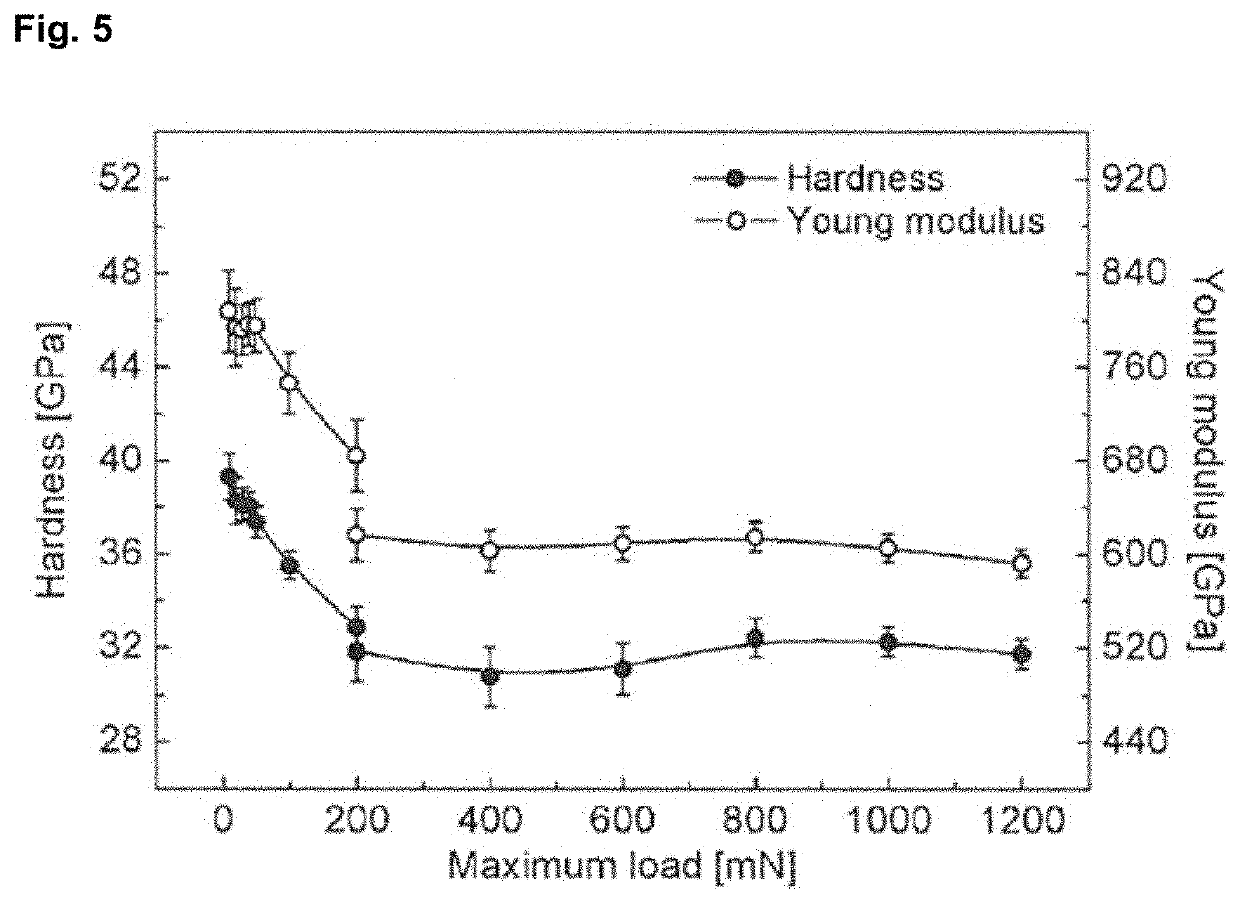Composite materials based on tungsten carbide and having noble metal binders, and method for producing said composite materials
- Summary
- Abstract
- Description
- Claims
- Application Information
AI Technical Summary
Benefits of technology
Problems solved by technology
Method used
Image
Examples
embodiment
[0035]The method for producing the inventive sintered composite material of tungsten carbide and gold is described below with an example:
1. Production of a Sintered Composite Material of Tungsten Carbide and Gold.
[0036]23.75 g of tungsten carbide and 1.25 g of gold powder were ground in hexane in a ball mill for 2 hours at 200 rpm with a ball to powder ratio of 10:1. The powder mixture was dried and then transferred to the graphite mold of 20 mm diameter. The powder was processed in the graphite mold under vacuum in the FAST chamber. The initial pressure was 10 MPa. In the 15 minutes thereafter, the pressure was steadily increased to 100 MPa. The maximum applied pulsed direct current for the FAST method reached 2 kA and the voltage reached 5.3 V. The test piece was heated at a rate of 150 K / min to a temperature of 1600° C. The dwell time of the sintering process at 1600° C. was 5 min. After that the current was shut off but pressure was maintained on the test piece. After the sinter...
PUM
| Property | Measurement | Unit |
|---|---|---|
| Temperature | aaaaa | aaaaa |
| Temperature | aaaaa | aaaaa |
| Temperature | aaaaa | aaaaa |
Abstract
Description
Claims
Application Information
 Login to View More
Login to View More - R&D Engineer
- R&D Manager
- IP Professional
- Industry Leading Data Capabilities
- Powerful AI technology
- Patent DNA Extraction
Browse by: Latest US Patents, China's latest patents, Technical Efficacy Thesaurus, Application Domain, Technology Topic, Popular Technical Reports.
© 2024 PatSnap. All rights reserved.Legal|Privacy policy|Modern Slavery Act Transparency Statement|Sitemap|About US| Contact US: help@patsnap.com










